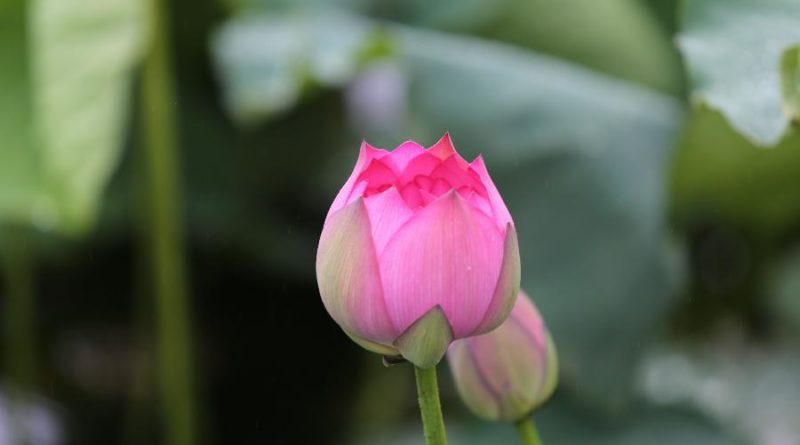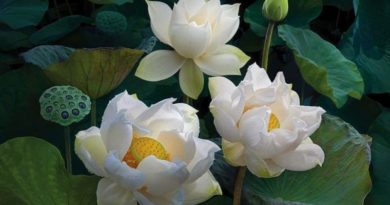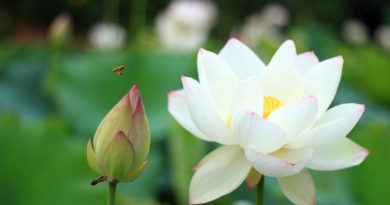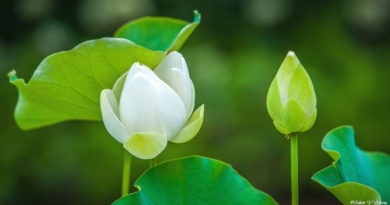THE PATTHANUDDESA DIPANI – CHAPTER 4: ANANTARA-PACCAYA
THE PATTHANUDDESA DIPANI – CHAPTER 4: ANANTARA-PACCAYA
What is the Anantara-paccaya? All classes of consciousness and their mental concomitants, which have just ceased (in the immediately preceding instant), are anantara-paccayas. Which are those that are related by this paccaya? All classes of consciousness and their mental concomitants, which have just arisen (in the immediately succeeding instant), are related by this paccaya.
In one existence of a being, the rebirth-consciousness is related to the first life-continuum by way of contiguity, and the first life-continuum is again related to the second life-continuum; and so on with the rest.
Now with reference to the Text, “When the second unmoral consciousness arises to the Pure (those of Pure abode, i.e. Suddhavasa), etc.,” which is expounded in the Dhamma-Yamaka, the ninth chapter of the Sixth Book of Abhidhamma, we understand that, as he becomes aware of his new body, the first process of thought which occurs to a being in his new life is the process of unmoral thought accompanied by a strong desire to live the new life, with the idea: ‘This is mine; this am I; this is Myself.” When this process is about to occur, the life-continuum vibrates first for two moments. Next comes the mind-door apprehension, and then follows a series of seven apperceptives, accompanied by a strong desire to live the new life. Thereafter, life-continua begin to flow again.
In fact, this being [1] does not know anything of his present new life. He lives, reflecting on what he had experienced in the previous existence. The basis of mind, however, is too weak, so that the object also cannot be clearly reflected. The object being thus indistinct, there generally arise only such classes of consciousness as are conjoined with perplexity.
After two months or so from the time of impregnation, during which period the individual is gradually developing, the controlling powers of the eyes, ears, etc., complete their full development. But there being no light, and so on, in the womb of the mother, the four classes of cognition–visual, auditory, and so on–do not arise. Only the tactile cognition and the mind-cognition arise. The child suffers much pain and distress at every change of the mother’s bodily posture, and much more so while he is being born. Even after he has come into the outer world, he has to lie very feebly on his back till the delicate body becomes strong enough (lit., reaches the state of maturity) to bear itself. During this period, he cannot cognize present objects, but his mind generally turns towards the objects of his previous existence. If he comes from the hell-world, he generally presents an unpleasant face, for he still feels what he had experienced in the hell-world. If he comes from the abode of devas, his pleasant face not only shines with smiles, but in its joyous expression of laugh, as it were, he shows his happiness at some thought of the objects of the Deva-world.
Furthermore, the members of his body steadily become stronger, and his sense-impressions clearer. So he is soon able to play joyfully in his own dear little ways. A happy life is thus begun for him; and he begins to take an interest in his new life. He takes to and imitates his mother’s speech. He prattles with her. Thus his senses almost entirely turn to the present world, and all his reflections of the previous life fade away. That is to say, he forgets his previous existence.
Do all beings forget their previous existences only at this period of life? No, not all beings. Some who are very much oppressed with the pain of conception, forget their previous existences during the period of pregnancy, some at the time of birth, some at the aforesaid period; some during the period of youth, and some in old age. Some extraordinary men do not forget for the whole of their lifetime, and there are even some who are able to reflect two or three previous existences. They are called Jatissarasatta, those gifted with the memory of their previous existences.
Now, to return to our subject. Though the six-door processes of thought begin to work after the child has been born, yet the six-door processes work themselves out in full action only when the child is able to take up present objects. Thus, in every process of thought, every preceding consciousness that has just ceased is related to every succeeding consciousness that has immediately arisen, by way of contiguity. And this relation of contiguity prevails throughout the whole span of the recurring existences of an individual, right from the untraceable beginning, with unbroken continuity. But only after he has attained the Path of Arahantship and has entered the Khandha-Parinibbána (i.e. the final extinction of the Five Aggregates), does this continuum break, or, more strictly speaking, cease forever.
Why is anantara so called, and why paccaya? Anantara is so called because it causes such states of phenomena as are similar to its own to succeed in the immediately following instant. Paccaya is so called because it renders help. In the phrase ‘similar to its own’, the word ‘similar’ is meant to express similarity in respect of having the faculty of being conscious of an object. And Sarammanta means a phenomenon, which does not occur without the presence of an object. So it has been rendered as ‘similar in respect of having the faculty’, and so forth.
Also the phrase “Dhammantarassa-uppadanatthena” expresses the following meaning:-“Though the preceding thought ceases, the conscious faculty of it does not become extinct until it has caused the succeeding thought to arise.”
Here it should be borne in mind that the series of paccaya-Dhammas of this relation resembles a series of preceding mothers, and the series of paccayuppanna-dhamma resembles a series of succeeding daughters. This being so, the last dying-thought of an Arahant should also cause the arising of a rebirth-consciousness. But it does not do so, for, at the close of the evolution of existence, all activities of volitions and defilements (Kamma-kilesa) have entirely ceased, and the last dying-thought has reached the final, ultimate quiescence.
[End of the Anantara-Relation]
FOOTNOTES AND REFERENCES:
[1]:
Ledi Sayadaw here seems to explain the life term of a womb-born being.







